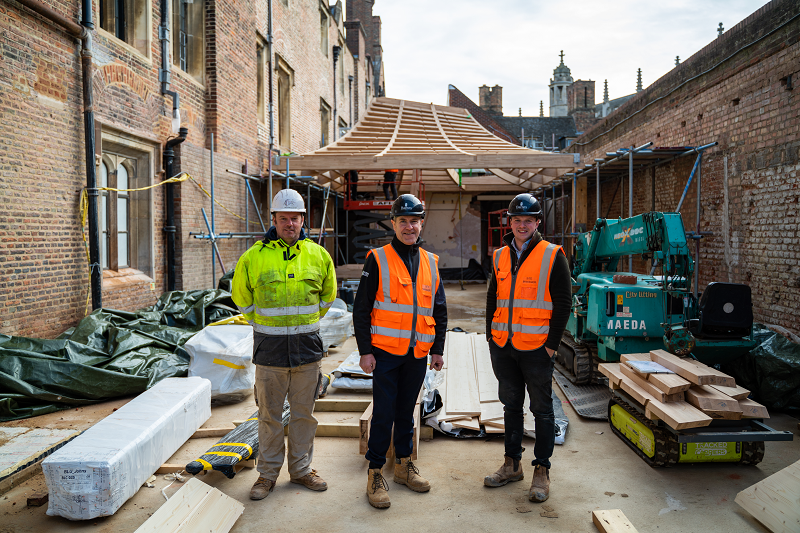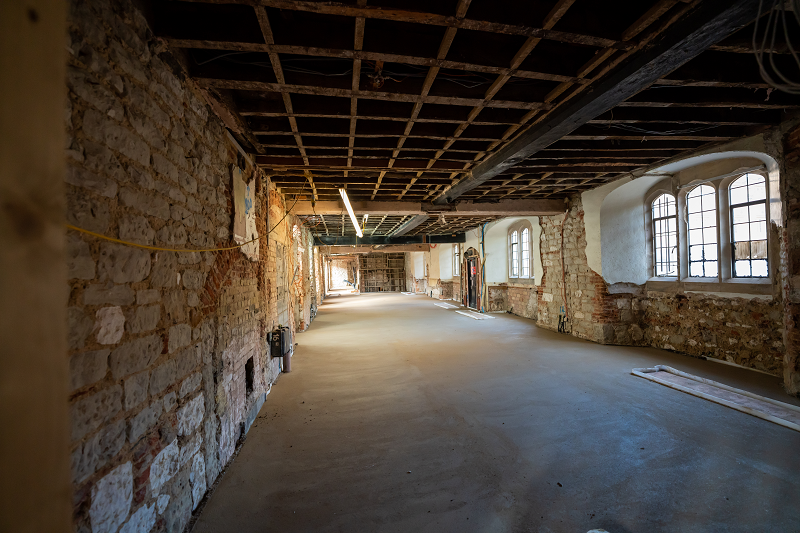‘Early coffeehouses brought people and ideas together – the community hub will do the same for St John’s’
“We have ensured the building designs are sustainable and have a minimal environmental impact”
Before tea eclipsed coffee as the nation’s favourite hot beverage, the exotic Turkish drink was exported to England and coffeehouses spread across London and beyond. Jo Tynan looks at the St John’s connection with the bean that powers so many of us through our day – extra hot latte anyone?
Back in the 18th-century, students and Fellows of St John’s were likely to have whiled away some of their time in a coffee house based a stone’s throw away in All Saints Passage. The establishment, called Clapham’s, was on a site now owned by St John’s College. Just over 10 years ago, archaeological remains discovered as part of the renovation of the Old Divinity School revealed remnants from one of the earliest coffee shops recorded in the UK.
Clapham’s – named after the husband and wife team that ran the coffee shop from the 1740s to the 1770s – was popular with students and townspeople alike, and a surviving verse from a student publication of 1751 even attests to its importance as a social centre: “Dinner over, to Tom’s or Clapham’s I go; the news of the town so impatient to know.”
The idea of bringing people together over food and drink is clearly not a new ritual and communal dining has been at the heart of life at St John’s since the College was founded in 1511. So, when it was decided to create a ‘Community Hub’ as part of a College masterplan it was purposefully designed to facilitate how people want to spend their time in Cambridge – eating, drinking, teaching, learning and collaborating but not necessarily in that order.

Contractors arrived at College in July last year to revamp the south-west corner of Second Court into a contemporary social centre, the Buttery Dining Room (BDR) has already been demolished, and the former Bar and JCR have been dismantled.
Helen Murley, Domestic Bursar, said: “Early coffeehouses brought people and ideas together – our aim is that the Community Hub will do the same for St John’s. Fortunately for the schedule of the Community Hub, no archaeological sites of interest have been found during the project! The contractors have uncovered several 17th century fireplaces, notably one in the old JCR, which have been protected during the building and will be carefully recovered with historic panelling, as required by the conservation authorities.
“We have ensured that the building designs are sustainable and have a minimal environmental impact – the underfloor heating is all run from an air source heat pump for example. The project aims to achieve a BREEAM Excellent rating for sustainability, which is the world’s leading sustainability assessment method for masterplanning projects and buildings.”
The new light and airy dining space will have a feature green wall watered by rainwater from the architect designed top-lit, freestanding, oak-framed roof – the first of five of the wooden ceiling pavilions has recently been installed and it is becoming easier to envisage how the space will be transformed.
The former patio will be redesigned and raised to create an extension to the dining room and Bar. The kitchen-style garden will have new tables and chairs and in-built seating areas, with disabled access to the side. The Grade I-Listed gate piers to the rear of the BDR will be moved to the west end of the patio, in line with Kitchen Lane and Kitchen Bridge to create a new gateway to the area. The Bar will be located to where the JCR once was, and the café will move to old Bar site.
“It has been fascinating for us as professionals to see how things were done by builders in the past”

Jonny Oliver, site manager for Barnes Construction, runs the team that oversees the project to make sure it goes to plan and completes on schedule.
He said: “Working on refurbishment projects in historic sites is much more challenging than a new build construction but far more rewarding and interesting – it isn’t every day that we have something like the Bridge of Sighs as our view from site!
“There has been a lot to consider, restrictions on the weight that Kitchen Bridge can bear has meant we haven’t been able to use certain machinery like a normal forklift, and even access to the site is tricky with the height restriction on the Queens’ Road entrance but we have worked around it.
“We have slightly shorter working hours than we would normally have so that the noise doesn’t disturb the students too much and we already have all the exam period marked in our diary so that we know to work around that. We’ve even had discussions about what we need to do to help tidy up ahead of the famous May Ball later this year.”
Jonny said that it is unusual for locations to have such high sustainability requirements too, he explained: “It is very rare for historic sites to go to the lengths of this project – even the kind of cement and plaster used is scrutinised. It has been fascinating for us as professionals to see how things were done by builders in the past – like the old footings – and we have uncovered original features including a cellar entrance and brick archways. Every week a consultant working for Historic England has visited the site to do a four-hour inspection to ensure building standards are being met.”
The project is on schedule to be completed by the start of the next academic year with the College steering group now focusing on the interior design of the Community Hub and sampling new menus. Today we might expect to order a chocolate swirl and an extra hot latte to help us cope with essay deadlines and the mountain of daily emails, but 250 years ago, customers would have expected ale and wine on offer as well – the Community Hub will be able to provide it all in one sociable and linked space.
*This article appears in the Lent Term 2022 issue of Eagle Eye, the St John's College magazine.
Published 18/3/2022